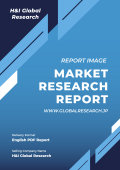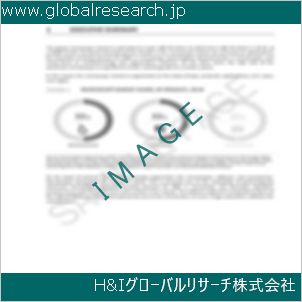1 Anti-Seize Compound Market Overview
1.1 Product Definition
1.2 Anti-Seize Compound Segment by Type
1.2.1 Global Anti-Seize Compound Market Value Growth Rate Analysis by Type 2022 VS 2029
1.2.2 Molybdenum Disulfide Anti-Seize
1.2.3 Copper-Based Anti-Seize
1.2.4 Aluminum Base Anti-Seize
1.2.5 Nickel Based Anti-Seize
1.3 Anti-Seize Compound Segment by Application
1.3.1 Global Anti-Seize Compound Market Value Growth Rate Analysis by Application: 2022 VS 2029
1.3.2 Metallurgy
1.3.3 Chemical Industry
1.3.4 Others
1.4 Global Market Growth Prospects
1.4.1 Global Anti-Seize Compound Production Value Estimates and Forecasts (2018-2029)
1.4.2 Global Anti-Seize Compound Production Capacity Estimates and Forecasts (2018-2029)
1.4.3 Global Anti-Seize Compound Production Estimates and Forecasts (2018-2029)
1.4.4 Global Anti-Seize Compound Market Average Price Estimates and Forecasts (2018-2029)
1.5 Assumptions and Limitations
2 Market Competition by Manufacturers
2.1 Global Anti-Seize Compound Production Market Share by Manufacturers (2018-2023)
2.2 Global Anti-Seize Compound Production Value Market Share by Manufacturers (2018-2023)
2.3 Global Key Players of Anti-Seize Compound, Industry Ranking, 2021 VS 2022 VS 2023
2.4 Global Anti-Seize Compound Market Share by Company Type (Tier 1, Tier 2 and Tier 3)
2.5 Global Anti-Seize Compound Average Price by Manufacturers (2018-2023)
2.6 Global Key Manufacturers of Anti-Seize Compound, Manufacturing Base Distribution and Headquarters
2.7 Global Key Manufacturers of Anti-Seize Compound, Product Offered and Application
2.8 Global Key Manufacturers of Anti-Seize Compound, Date of Enter into This Industry
2.9 Anti-Seize Compound Market Competitive Situation and Trends
2.9.1 Anti-Seize Compound Market Concentration Rate
2.9.2 Global 5 and 10 Largest Anti-Seize Compound Players Market Share by Revenue
2.10 Mergers & Acquisitions, Expansion
3 Anti-Seize Compound Production by Region
3.1 Global Anti-Seize Compound Production Value Estimates and Forecasts by Region: 2018 VS 2022 VS 2029
3.2 Global Anti-Seize Compound Production Value by Region (2018-2029)
3.2.1 Global Anti-Seize Compound Production Value Market Share by Region (2018-2023)
3.2.2 Global Forecasted Production Value of Anti-Seize Compound by Region (2024-2029)
3.3 Global Anti-Seize Compound Production Estimates and Forecasts by Region: 2018 VS 2022 VS 2029
3.4 Global Anti-Seize Compound Production by Region (2018-2029)
3.4.1 Global Anti-Seize Compound Production Market Share by Region (2018-2023)
3.4.2 Global Forecasted Production of Anti-Seize Compound by Region (2024-2029)
3.5 Global Anti-Seize Compound Market Price Analysis by Region (2018-2023)
3.6 Global Anti-Seize Compound Production and Value, Year-over-Year Growth
3.6.1 North America Anti-Seize Compound Production Value Estimates and Forecasts (2018-2029)
3.6.2 Europe Anti-Seize Compound Production Value Estimates and Forecasts (2018-2029)
3.6.3 China Anti-Seize Compound Production Value Estimates and Forecasts (2018-2029)
3.6.4 Japan Anti-Seize Compound Production Value Estimates and Forecasts (2018-2029)
4 Anti-Seize Compound Consumption by Region
4.1 Global Anti-Seize Compound Consumption Estimates and Forecasts by Region: 2018 VS 2022 VS 2029
4.2 Global Anti-Seize Compound Consumption by Region (2018-2029)
4.2.1 Global Anti-Seize Compound Consumption by Region (2018-2023)
4.2.2 Global Anti-Seize Compound Forecasted Consumption by Region (2024-2029)
4.3 North America
4.3.1 North America Anti-Seize Compound Consumption Growth Rate by Country: 2018 VS 2022 VS 2029
4.3.2 North America Anti-Seize Compound Consumption by Country (2018-2029)
4.3.3 United States
4.3.4 Canada
4.4 Europe
4.4.1 Europe Anti-Seize Compound Consumption Growth Rate by Country: 2018 VS 2022 VS 2029
4.4.2 Europe Anti-Seize Compound Consumption by Country (2018-2029)
4.4.3 Germany
4.4.4 France
4.4.5 U.K.
4.4.6 Italy
4.4.7 Russia
4.5 Asia Pacific
4.5.1 Asia Pacific Anti-Seize Compound Consumption Growth Rate by Region: 2018 VS 2022 VS 2029
4.5.2 Asia Pacific Anti-Seize Compound Consumption by Region (2018-2029)
4.5.3 China
4.5.4 Japan
4.5.5 South Korea
4.5.6 China Taiwan
4.5.7 Southeast Asia
4.5.8 India
4.6 Latin America, Middle East & Africa
4.6.1 Latin America, Middle East & Africa Anti-Seize Compound Consumption Growth Rate by Country: 2018 VS 2022 VS 2029
4.6.2 Latin America, Middle East & Africa Anti-Seize Compound Consumption by Country (2018-2029)
4.6.3 Mexico
4.6.4 Brazil
4.6.5 Turkey
5 Segment by Type
5.1 Global Anti-Seize Compound Production by Type (2018-2029)
5.1.1 Global Anti-Seize Compound Production by Type (2018-2023)
5.1.2 Global Anti-Seize Compound Production by Type (2024-2029)
5.1.3 Global Anti-Seize Compound Production Market Share by Type (2018-2029)
5.2 Global Anti-Seize Compound Production Value by Type (2018-2029)
5.2.1 Global Anti-Seize Compound Production Value by Type (2018-2023)
5.2.2 Global Anti-Seize Compound Production Value by Type (2024-2029)
5.2.3 Global Anti-Seize Compound Production Value Market Share by Type (2018-2029)
5.3 Global Anti-Seize Compound Price by Type (2018-2029)
6 Segment by Application
6.1 Global Anti-Seize Compound Production by Application (2018-2029)
6.1.1 Global Anti-Seize Compound Production by Application (2018-2023)
6.1.2 Global Anti-Seize Compound Production by Application (2024-2029)
6.1.3 Global Anti-Seize Compound Production Market Share by Application (2018-2029)
6.2 Global Anti-Seize Compound Production Value by Application (2018-2029)
6.2.1 Global Anti-Seize Compound Production Value by Application (2018-2023)
6.2.2 Global Anti-Seize Compound Production Value by Application (2024-2029)
6.2.3 Global Anti-Seize Compound Production Value Market Share by Application (2018-2029)
6.3 Global Anti-Seize Compound Price by Application (2018-2029)
7 Key Companies Profiled
7.1 Anti-Seize Technology
7.1.1 Anti-Seize Technology Anti-Seize Compound Corporation Information
7.1.2 Anti-Seize Technology Anti-Seize Compound Product Portfolio
7.1.3 Anti-Seize Technology Anti-Seize Compound Production, Value, Price and Gross Margin (2018-2023)
7.1.4 Anti-Seize Technology Main Business and Markets Served
7.1.5 Anti-Seize Technology Recent Developments/Updates
7.2 Chamaeleon
7.2.1 Chamaeleon Anti-Seize Compound Corporation Information
7.2.2 Chamaeleon Anti-Seize Compound Product Portfolio
7.2.3 Chamaeleon Anti-Seize Compound Production, Value, Price and Gross Margin (2018-2023)
7.2.4 Chamaeleon Main Business and Markets Served
7.2.5 Chamaeleon Recent Developments/Updates
7.3 Henkel
7.3.1 Henkel Anti-Seize Compound Corporation Information
7.3.2 Henkel Anti-Seize Compound Product Portfolio
7.3.3 Henkel Anti-Seize Compound Production, Value, Price and Gross Margin (2018-2023)
7.3.4 Henkel Main Business and Markets Served
7.3.5 Henkel Recent Developments/Updates
7.4 Ast Industries, Inc
7.4.1 Ast Industries, Inc Anti-Seize Compound Corporation Information
7.4.2 Ast Industries, Inc Anti-Seize Compound Product Portfolio
7.4.3 Ast Industries, Inc Anti-Seize Compound Production, Value, Price and Gross Margin (2018-2023)
7.4.4 Ast Industries, Inc Main Business and Markets Served
7.4.5 Ast Industries, Inc Recent Developments/Updates
7.5 Dunbar Sales & Manufacturing Co., Inc
7.5.1 Dunbar Sales & Manufacturing Co., Inc Anti-Seize Compound Corporation Information
7.5.2 Dunbar Sales & Manufacturing Co., Inc Anti-Seize Compound Product Portfolio
7.5.3 Dunbar Sales & Manufacturing Co., Inc Anti-Seize Compound Production, Value, Price and Gross Margin (2018-2023)
7.5.4 Dunbar Sales & Manufacturing Co., Inc Main Business and Markets Served
7.5.5 Dunbar Sales & Manufacturing Co., Inc Recent Developments/Updates
7.6 Tiodize
7.6.1 Tiodize Anti-Seize Compound Corporation Information
7.6.2 Tiodize Anti-Seize Compound Product Portfolio
7.6.3 Tiodize Anti-Seize Compound Production, Value, Price and Gross Margin (2018-2023)
7.6.4 Tiodize Main Business and Markets Served
7.6.5 Tiodize Recent Developments/Updates
7.7 Bostik
7.7.1 Bostik Anti-Seize Compound Corporation Information
7.7.2 Bostik Anti-Seize Compound Product Portfolio
7.7.3 Bostik Anti-Seize Compound Production, Value, Price and Gross Margin (2018-2023)
7.7.4 Bostik Main Business and Markets Served
7.7.5 Bostik Recent Developments/Updates
7.8 Bernard Lab
7.8.1 Bernard Lab Anti-Seize Compound Corporation Information
7.8.2 Bernard Lab Anti-Seize Compound Product Portfolio
7.8.3 Bernard Lab Anti-Seize Compound Production, Value, Price and Gross Margin (2018-2023)
7.8.4 Bernard Lab Main Business and Markets Served
7.7.5 Bernard Lab Recent Developments/Updates
7.9 Sae Manufacturing Specialties Corp
7.9.1 Sae Manufacturing Specialties Corp Anti-Seize Compound Corporation Information
7.9.2 Sae Manufacturing Specialties Corp Anti-Seize Compound Product Portfolio
7.9.3 Sae Manufacturing Specialties Corp Anti-Seize Compound Production, Value, Price and Gross Margin (2018-2023)
7.9.4 Sae Manufacturing Specialties Corp Main Business and Markets Served
7.9.5 Sae Manufacturing Specialties Corp Recent Developments/Updates
7.10 Permatex
7.10.1 Permatex Anti-Seize Compound Corporation Information
7.10.2 Permatex Anti-Seize Compound Product Portfolio
7.10.3 Permatex Anti-Seize Compound Production, Value, Price and Gross Margin (2018-2023)
7.10.4 Permatex Main Business and Markets Served
7.10.5 Permatex Recent Developments/Updates
7.11 Crc Industries
7.11.1 Crc Industries Anti-Seize Compound Corporation Information
7.11.2 Crc Industries Anti-Seize Compound Product Portfolio
7.11.3 Crc Industries Anti-Seize Compound Production, Value, Price and Gross Margin (2018-2023)
7.11.4 Crc Industries Main Business and Markets Served
7.11.5 Crc Industries Recent Developments/Updates
7.12 Devcon
7.12.1 Devcon Anti-Seize Compound Corporation Information
7.12.2 Devcon Anti-Seize Compound Product Portfolio
7.12.3 Devcon Anti-Seize Compound Production, Value, Price and Gross Margin (2018-2023)
7.12.4 Devcon Main Business and Markets Served
7.12.5 Devcon Recent Developments/Updates
8 Industry Chain and Sales Channels Analysis
8.1 Anti-Seize Compound Industry Chain Analysis
8.2 Anti-Seize Compound Key Raw Materials
8.2.1 Key Raw Materials
8.2.2 Raw Materials Key Suppliers
8.3 Anti-Seize Compound Production Mode & Process
8.4 Anti-Seize Compound Sales and Marketing
8.4.1 Anti-Seize Compound Sales Channels
8.4.2 Anti-Seize Compound Distributors
8.5 Anti-Seize Compound Customers
9 Anti-Seize Compound Market Dynamics
9.1 Anti-Seize Compound Industry Trends
9.2 Anti-Seize Compound Market Drivers
9.3 Anti-Seize Compound Market Challenges
9.4 Anti-Seize Compound Market Restraints
10 Research Finding and Conclusion
11 Methodology and Data Source
11.1 Methodology/Research Approach
11.1.1 Research Programs/Design
11.1.2 Market Size Estimation
11.1.3 Market Breakdown and Data Triangulation
11.2 Data Source
11.2.1 Secondary Sources
11.2.2 Primary Sources
11.3 Author List
11.4 Disclaimer
| ※参考情報 アンチシーズコンパウンド(Anti-Seize Compound)は、金属部品間の摩擦を軽減し、焼きつきを防ぐために使用される潤滑剤の一種です。特に、高温環境や過酷な条件下での金属接触部においてその効果を発揮します。このコンパウンドは、主にメタル、セラミック、または他の耐摩耗性材料を含む特殊なフォーミュラから成り立っており、自動車産業、建設、製造業、航空宇宙産業など、多岐にわたる分野で活用されています。 アンチシーズコンパウンドの定義は、金属部品同士の接触面に適用され、摩擦を低減させるとともに、金属同士が高温や腐食によって焼きつくのを防止するための製品であると言えます。この利点により、部品の分解や取り付けの際に発生するトラブルを軽減し、メンテナンス時における労力や時間を大幅に削減することが可能となります。 このコンパウンドの特徴としては、まず耐熱性が挙げられます。通常、高温となる環境下でもその性能を維持することができ、焼きつきのリスクを大幅に低下させます。また、耐腐食性にも優れており、湿気や化学薬品、塩水などから金属を保護する役割も果たします。さらに、適用が簡単であり、指定された部品の表面に直接塗布することができるため、施工が容易である点も特長の一つです。 アンチシーズコンパウンドには、いくつかの種類が存在します。一般的には、銅を主成分とした銅ベースのもの、高温用のグラファイトベースのもの、ステンレススチール用のものなどがあり、それぞれ異なる用途に応じて設計されています。例えば、銅ベースの製品は高温環境での使用に適しており、特に自動車の排気系や重機器の分野で重宝されます。グラファイトベースは、特に潤滑性が高く、摩擦を極限まで低下させることができるため、高速回転部品に適しています。 用途に関しては、アンチシーズコンパウンドは非常に広範囲にわたり使用されています。自動車産業では、マフラーやエンジンの部品、ボルトとナットの接合部分などに使用されます。特に熱が発生しやすい部位では、焼きつき防止効果が求められるため、使用頻度が高いです。また、建設業界では機材の主要部品やボルト類、配管の接続部などに用いられ、これによりメンテナンスの際の作業効率を上げることができます。 航空宇宙産業においても、アンチシーズコンパウンドは重要な役割を果たしています。高温高圧の環境下でも安定した性能を発揮し、コンポーネントの安全性を確保するために使用されます。このように、さまざまな産業で使われるアンチシーズコンパウンドは、部品の延命や作業の効率化に寄与し、メンテナンスコストの削減にも貢献しています。 関連技術としては、潤滑技術全般や高性能材料の開発が挙げられます。特に、ナノテクノロジーを駆使した新しい潤滑剤の開発が進められており、従来のアンチシーズコンパウンドに対するさらなる効率化や性能向上が期待されています。また、自動車や機械の設計段階でも、アンチシーズコンパウンドを使用することを前提にした設計が行われることが増えており、部品の相互作用や摩擦に関する研究が進展しています。 これらの観点から、アンチシーズコンパウンドは、現代の工業において欠かせない要素となっていることが明らかです。正しく使用することで、様々な金属部品の性能を向上させ、製品の寿命を延ばすことにつながります。加えて、メンテナンスの手間を減らし、作業の効率化を実現するための重要なツールとして、今後も多くの分野でその重要性は増していくでしょう。 今後の展望としては、環境保護の観点からも、より安全でエコロジカルな調合が求められるでしょう。新たな材料や成分の研究が進むことで、従来のアンチシーズコンパウンドの性能を超える革新的な製品が登場することが期待されます。加えて、業界全体での意識改革が進むことで、持続可能性を重視した製品開発が促進されることが望まれます。そのためには、製品に対する科学的な理解を深め、技術革新を追求していく必要があります。 このように、アンチシーズコンパウンドは、金属部品の摩擦低減や焼きつき防止のために重要な役割を果たす材料であり、多岐にわたる用途や特性を持っています。製品が進化し続ける中で、その重要性は今後ますます高まっていくと考えられます。希望する方向性での技術革新が進むことを期待しつつ、使用者自身が製品の特性を理解し、適切に活用することが、安定したパフォーマンスの維持に寄与することでしょう。 |
❖ 免責事項 ❖
http://www.globalresearch.jp/disclaimer


-gr.jpg)









